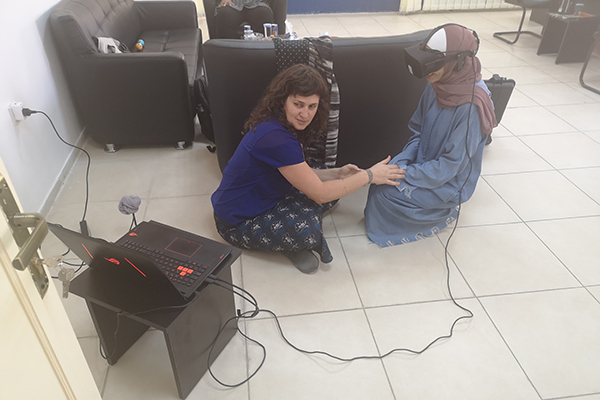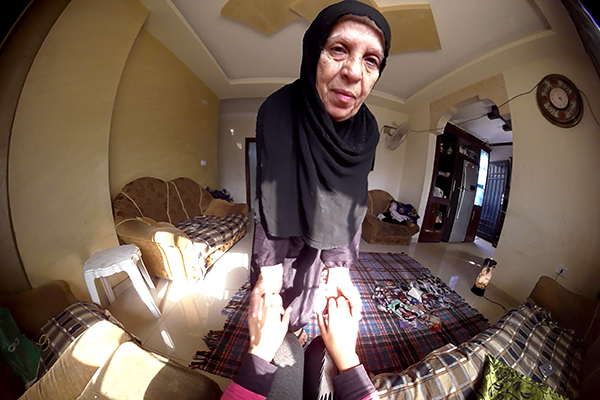The project uses virtual reality (VR) to convey the narratives of displacement from the viewpoint of refugees.

Overview of VR technology
We use the system of The Library of Ourselves developed by BeAnotherLab to allow users to step into the shoes of refugees and to experience their narratives of war, displacement and new settlement from their own point of view. Different to other VR productions, we do not use avatars but rather real-life filming. It is a new kind of immersive and embodied experience in which the narrative is conveyed from the first-person perspective. The VR is co-produced by the refugees, recorded in their own spaces and enacted in their own ways. We have used this type of 360˚ VR production to bring the world of the refugees to the viewer. The embodied experience will reach all senses: the user will be able to not only hear and see the refugees but also feel and smell their world.

The aim of using VR
We use VR as an additional research tool. It is a form of action and participatory research in which refugees are co-producers and co-designers as well as co-directors of the VR work. It is a creative and innovative way to conduct research. We also use it as a tool to teach at universities. We critically engage with the use of modern technology in academic research. We foreground questions about human perception articulated through technology in order to better understand the link between empathy and immersive experiences. Our research is sustainable as we offer training to students who wish to use The Library of Ourselves as a creative tool for their own research.
We engage in dialogue with users after their VR experience and stimulate self-reflection and critical thinking on topics covered in the VR such as, racism, Islamophobia, gender bias and violence.

The content of the VR production
The VR production consists of two VR films on Iraqi refugees who have found refuge in Jordan.

The first is narrated from three perspectives (grandmother, mother and daughter) about the death of children during the Iraq war, the killing of a sister by the American Blackwater company and the move to Jordan and building a new life in a new country.
The second VR is about remembering Iraq, the simple things that can never be forgotten in the diaspora such as applying henna to the hands, the sound of birds or the smell of fresh fruits and herbs at the market.

Further four VR films are produced telling the stories of Syrian refugees who fled the war in Syria to secure a better future for their children in Jordan. The user is introduced to the Syrian regimes’ violent reaction towards the uprising, mass raids and large-scale imprisonment of particularly young men and their conscription into the Syrian army.

The second VR film narrates the story of a young Syrian girl who was consistently sexually harassed by Jordanian men. Whether around the corner of her school, or at the hairdresser were she used to train, men were always harassing her. One day, after one of these unpleasant encounters with one of these men, the girl was in such a panic that she had to tell her parents but not without consequences.
The final VR film is about a businesswoman who never wanted to leave her country but is now forced to stay in Jordan. After years of living in Jordan, she tried to go back to Syria but was shocked to see all her properties destroyed: her workshop, shops and houses. Nothing is left to go back to.
We have produced the VR films in Arabic with English, German, Swedish and Spanish voiceover.